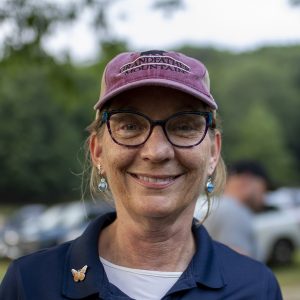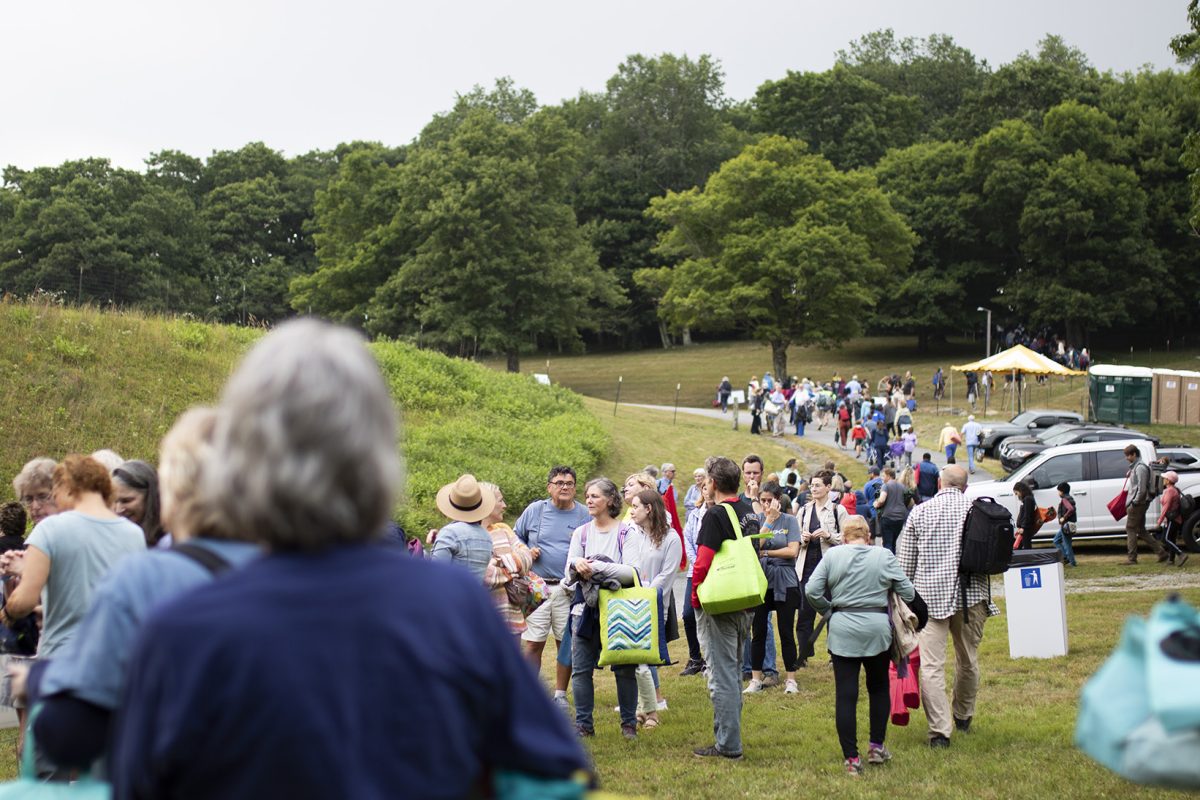Families, friends and strangers gathered on Grandfather Mountain, sitting in quiet anticipation awaiting a spectacle of lights. All sunlight vanished from the landscape, a silence settled over the mountain and a gentle breeze swept through, sparking the radiance of thousands of twinkling lights dancing through the night.
Fireflies, lightning bugs, glow worms or luminous insects — however one might know them — have long illuminated summer nights in Appalachia. Only in recent years have they been seen flashing in unison deep in Grandfather Mountain.
The park reports the presence of 10 species of fireflies, including the Photinus carolinus, or synchronous firefly, found on the mountain. The synchronized bug only appears for a few weeks each year and was first noticed in 2019 by a NC State professor visiting the mountain for research.
Afterward, John Caveny, the director of conservation and education at Grandfather Mountain, said he spent almost every night of the summer of 2020 counting and researching synchronous fireflies.
“When I was up here doing the counts and I finally saw the peak night for the first time, it was one of the only times I felt completely speechless of a natural phenomenon like this,” Caveny said.
In the five years since the discovery, the park, run by the Grandfather Mountain Stewardship Foundation, has held an event called Grandfather Glows for visitors to witness the phenomena. The fireflies spark intrigue and curiosity in many Caveny said, partially due to their nostalgic feeling.
“I’ve loved fireflies since I was a kid, some of my favorite memories were catching them in a jar,” Caveny said. “Every time I see them up here on Grandfather it reminds me of that childhood sense of wonder and amazement, I think anyone who grew up in the South can feel that.”
There is a plethora of staff and volunteers dedicated to conservation and education on the mountain, including middle school science teacher and educator Trish Reed, who works to develop programs within the park for summer camps, schools and more.
“We often are bringing our classroom outdoors, it can be quite a challenge and takes a lot of planning to make it work,” Reed said.
With Grandfather Mountain having some of “the most extreme and quick changing weather on the East Coast,” according to their website, the success of these outdoor programs hinges not just on meticulous preparation but also on the unique expertise and collaboration of the staff.

“Everyone here has a piece of the puzzle,” Reed said while explaining the team’s efforts at Grandfather. “When we all combine our knowledge and backgrounds we can make these programs great.”
Amidst the multiple walking encyclopedias of all things Grandfather Mountain is naturalist Andrew Wolf, who gave a detailed talk on the science behind the fireflies. One of his many facts was how fireflies are not true bugs, explaining they are instead Coleoptera, which he said is the “fancy” name for a beetle.
With education being a top priority for Grandfather Mountain, Caveny emphasized the importance of having these events accessible to the public while making sure to protect the mountain and not disrupt the fireflies, saying, “they won’t be here in the future if we aren’t protecting them.”
Finnbar Maloney, a natural resource management technician at Grandfather Mountain, said one of his favorite parts of the job is being able to teach people about the environment and how to leave no trace.
“When you see the kids’ eyes glow with understanding,” Maloney said. “That’s the best part and something that makes this so worth it.”
In its few short years, the event has buzzed with attention, with over 12,000 people interested in tickets. In 2022, Grandfather Mountain said they experienced a website crash due to an overwhelming interest in ticket purchases.
In light of encountering a few flickers of challenges along the way, the park has adapted its ticket process. This year marked a pivotal shift as they implemented a lottery system to streamline ticket distribution and make the event more accessible to the public.
The event ran from 7-11 p.m. and began with visitors gathering in MacRae Meadows to learn about the history and biology of the event, make firefly related arts and crafts and purchase Grandfather Glows souvenirs.
Among the crowd was Mike Eyre, a father who brought his wife, daughters and parents to the event, traveling from Virginia Beach, Virginia to experience the fireflies.
“My parents were looking for something our whole family could enjoy, they heard of this and we were lucky enough to get tickets,” Eyre said. “We’re glad we can enjoy this special experience together.”
The crowd wandered up the trail around sunset to find a spot to nestle in for the evening and observe the wonder. Guests were instructed prior on responsible etiquette for the fireflies and provided with red light flashlights and red cellophane to cover any mobile devices with to not disrupt the insects.
After dark, the fireflies emerge from the forest floor to find mates and rely on pheromones and their unique flashing patterns to unite in the dark. Caveny explained the flashing is a “call and a response between the male fireflies and the female fireflies,” featuring five to eight flashes followed by a pause of about eight seconds before the cycle repeats.
Navigating the trail were longtime friends Russell Richards, an artist from Charlottesville, Virginia; Branson and Norma Prosser, a tutor and nurse from Wake Forest; and a few of their close friends whose bond stretches back to their college days. Norma Prosser said she took the initiative to organize a reunion upon learning about the event.
“When I heard about it I thought to myself ‘Before I die, I want to see these synchronized fireflies,’” Norma Prosser said. “We all went to college together and have been friends since, we wanted to see this together.”
Reflecting on the changes since his college days, Richards emphasized the shift in the environment over the years. “People growing up nowadays don’t really know how much the climate has changed,” Richards said. “It’s crucial for more people to realize this so that we can preserve nature and moments like these.”
As the mountain glowed with the rhythmic pulse of fireflies’ belly lanterns, the audience remained entranced, momentarily detached from the outside world and immersed in the magic of nature’s display long into the night.



